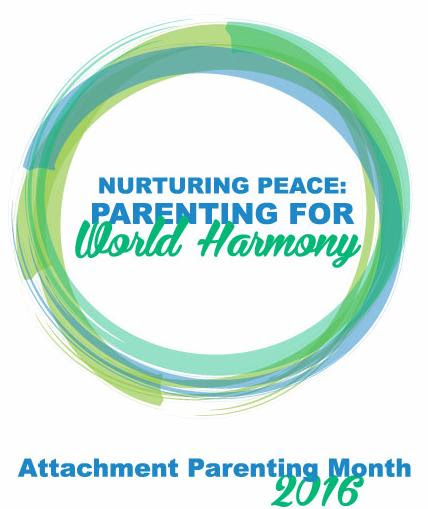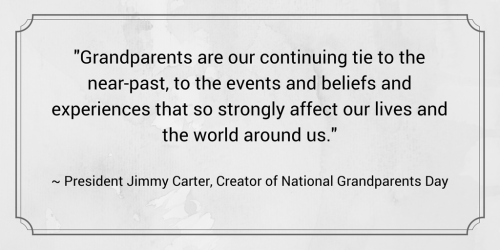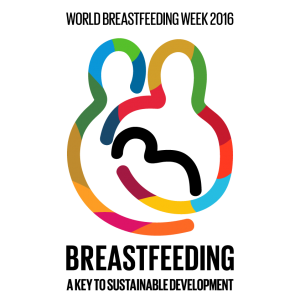Editor’s note: There are continually media reports coming out about parenting approaches, including Attachment Parenting. Some are affirming. Others are worrying. It’s important that we know how to read between the lines on media reports regarding Attachment Parenting so that we can make informed decisions. That’s why Attachment Parenting International (API) created these consumer media guidelines:
What’s Fact or Fiction in Parenting News?
Media Analysis Guidelines for Parents
 Let’s say the blogosphere is abuzz about a research study that shows that sleep-training methods like cry-it-out have no long-term effects on children or that physically punitive discipline tactics like spanking result in children who are better behaved or that birthing without drug pain relief is dangerous.
Let’s say the blogosphere is abuzz about a research study that shows that sleep-training methods like cry-it-out have no long-term effects on children or that physically punitive discipline tactics like spanking result in children who are better behaved or that birthing without drug pain relief is dangerous.
Perhaps, you’re committed to Attachment Parenting and child-rearing “news of the day” has no effect on what decisions you’ll make regarding your child in the future.
When parents who are firm in Attachment Parenting have a question about whether a child-rearing practice leads to a secure parent-child attachment bond, they feel certain that they can turn to API resources, specifically API’s Eight Principles of Parenting, the cofounders’ book Attached at the Heart, or local API Support Groups and API Leaders.
But what if you’re new to Attachment Parenting — it’s intrigued you, you’re trying it out, but you’re unsure of whether this will work for your family because it’s so different from how you were raised or how other parents around you are raising their children?
When you hear that other parenting strategies are safer and better than yours, whether that holding your baby too much will keep him from developing independence or that there’s no benefit to breastfeeding once solids are introduced — whether you’re reading this in a magazine or hearing it from your neighbor — you begin to doubt yourself and your child. You think, maybe, I got it all wrong. Maybe I should be doing this or that. Maybe I’m setting my child up for failure?
How can you know for sure that your choices in how you parent, even if opposite from others in your family, friends, or community, are right for you and your family, and are healthy for your child?
API has created these guidelines for parents to help sift through the clutter of media news reports, parenting experts, the next big thing in baby products, or even a pediatrician’s advice…basically anyone or anything that tries to influence the way you parent your child:
- Know your beliefs, values, and how these fit (or don’t fit) into the culture around you
How we parent is rooted in the legacy that we want to pass down to our children. Moral attitudes are the core of ourselves, our identity. You can identify them by recognizing the emotions attached to your preferences regarding morals. These values and beliefs may not necessarily jive with the culture in which you live. For example, a study that urges women not to choose a birth without interventions is logical for a culture where childbirth is treated like a medical emergency rather than a natural, biological event.
Every piece of advice, whether a formal research study or a book by a popular parenting author or a comment made by your child’s nurse or a quip from your mother-in-law, has a story. What is it?
Who is the person talking or writing? What is their specific field of study? What is their primary professional focus, like research, medical, policy, etc.? What is their sponsoring organization about? What theory are they citing? What is their credentials or experience? Is it in line with your values and belief system, with your goals for your child? Are researchers observing ethical standards in their treatment of study participants?
Are journalists following ethical guidelines? Dramatizing an article or blog post, also known as sensationalism, is a common way to pull readers into an article. A little punchiness isn’t bad, but it becomes unethical when the hook of a story turns into demoralizing one side of an otherwise harmless, though not necessarily controversial, topic. Journalists — which includes both writers and editors by trade, and those who share their thoughts through blogs and even comments — have great power in forming and shifting public opinion. This is why it is utterly important that mass communicators follow an ethical standard, and that their readers know the difference between ethical and unethical journalism.
What may be influencing the person giving you advice? Beware of any businesses whose goal is to sell a product or service for-profit. In terms of a research study, who is paying for it? It’s not uncommon for some well-publicized studies to be funded by organizations that lean strongly toward the results, such as a study that shows bedsharing to be dangerous that is paid for by an anti-cosleeping group.
- Beware of out-of-the-ordinary claims
Does the information offer evidence-based recommendations that follow current best practices? The majority of studies show that spanking is detrimental to child development. If a study is introduced that shows spanking to have a positive effect on children, be suspicious. Such a study isn’t valid until other studies begin to show the same results.
Any information posed as fact should have references to a credible source. An article summarizing a research study should at least provide all the information for you to look up the study yourself, if not provide you a direct link to the original abstract.
Any author or person stating something as fact, as opposed to opinion, should be able to provide you with those references. If someone quotes a statistic, look it up.
In terms of a research study itself, the sample size matters as does who is in the sample and how they were selected; random selection is desirable. What was measured and how? Are the outcome measures clearly related to the variables with which the study occurred? At least 1 long-term follow-up is desirable. When reporting observations, are the study’s authors reporting what they actually saw or are they reporting their interpretation of what they saw? Are the results of the study based on a sample of the population that would apply to you? Also, see whether the study has been replicated, if it was published in a peer-reviewed journal, and don’t forget to check out the researcher’s own discussion of limitations.
The strongest research methods for psychological studies are: qualitative findings versus quantitative; experimental rather than descriptive or correlational; controlled-experiment, meta-analysis, and observation designs over archival, case study, computational modeling, content analysis, field experiment, interview, neuroimaging, quasi experiment, self-report inventory, random sample survey, or twin study; and prospective (where subjects are recruited prior to the proposed independent effects being administered) and longitudinal (where subjects are studied at multiple time points) rather than retrospective or cross-section study.
Information that works tends to be applicable to everyone. Seek out information that doesn’t count out differences in race, marital status, ethnicity, etc., although understandably, some information such as breastfeeding only applies to a certain gender.
- Understand that the media sensationalizes
While their goal is accuracy in reporting, journalists only have so much room to write or time on the air and a controversial story angle and flashy headline is the best way to attract readers. Readers/viewers tend to side with people who share their identity, even when the facts disagree; that’s why throwing data and rational arguments at people doesn’t change attitudes. What does change attitudes is emotional storytelling, and that’s what the news media knows hooks readers. Another hook is in political motivations. Remember to ask yourself: What is the purpose of this message, and who is the intended audience, and what techniques are being used to grab and hold my attention? Add all of these factors together, and a news media report likely has gaps in critical pieces of information that affects how the information should be used by consumers.
Along these same lines, realize that nothing “proves” in research. Research may show a “correlation,” a “connection,” or may “suggest,” but there are simply too many factors in any one person’s life to “prove” an outcome. A website that currently does a good job at presenting information factually and without bias is MedicalXpress.com.
- Seek out a balanced argument
Look for sources that readily open a discussion about parenting ideas, whether new-age or traditional, and that provide all sides of a debate: risks, benefits, and alternatives. Demand transparency: Credible sources disclose their biases and conflicts of interest.
- Look for Attachment Parenting synonyms
While the merits of any parenting style should be weighed with your values and belief system, there are many parenting programs that are in line with API’s Eight Principles of Parenting but that are called by another name, such as connection, instinctive, empathic, sensitive, unconditional, peaceful, natural, and nonviolent parenting, and others do not refer to any name in particular. Attachment Parenting is an umbrella term; it includes every style of childrearing that creates and strengthens secure parent-child attachment bonds.
However, not all parenting styles are as inclusive as Attachment Parenting; some may discourage bedsharing for example or may advocate a certain parenting choice that API does not take a stance on such as cloth diapering or circumcision.














